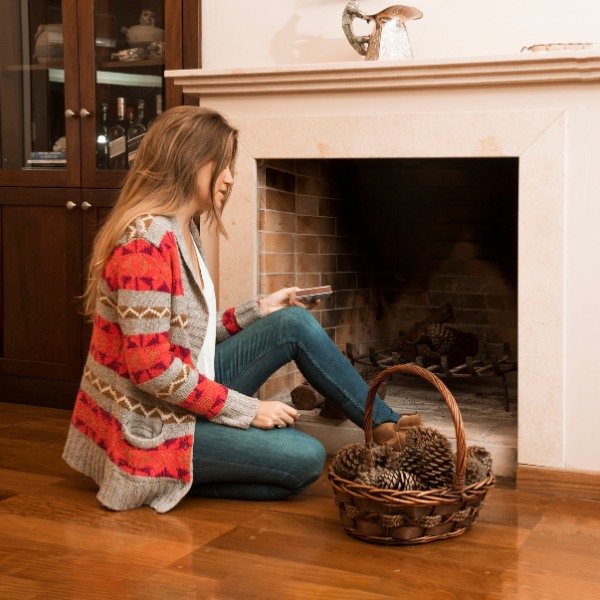Choosing the Best Firewood for Your Fireplace
While all firewood comes from trees, not all firewood is the same. In fact, there are some huge differences among the many species of wood that can be cut into logs and burned in a fireplace. The Chimney Guys of Pataskala, OH, would like to share a little about different types of firewood and what you can expect when you burn them.
 The main firewood division: hardwood and softwood
The main firewood division: hardwood and softwood
Wood typically is divided into hard and soft varieties. Generally, hardwoods burn longer and produce less smoke. Most softwoods tend to be quick-burning and smoky.
Smoke is a primary concern when choosing firewood because smoke becomes creosote in your chimney flue. Creosote is the #1 cause of reported chimney fires each year in Ohio and the rest of the U.S.
Let’s look at a few of the more popular wood types.
Oak
Oak is a very hard but quick-burning wood. It doesn’t produce much smoke if fully dried out after harvesting.
Hickory
This is a great hardwood for producing a lot of heat and long burns. Many people also love hickory for its nostalgic, smoky smell (even though it doesn’t create a lot of actual smoke).
Maple
Always a steady burner, maple is ideal for extended fires and consistent heat. It’s not very smoky, and it gives off a subtle aroma that hints at maple syrup.
Ash
Ash is a good utility hardwood: it produces moderate heat and burns for long periods.
Birch
Birch creates a decent amount of heat and, like oak, is fairly fast-burning. Birch bark makes great kindling material.
Cherry
Cherrywood is known for its refreshing aroma, but it’s not a high-heat producer like many other hardwoods.
The wood varieties above are all good choices for fires that don’t create excess smoke. Below are some wood varieties that either tend to be quite smoky or simply don’t produce much heat.
Painted wood
If you have broken-up pieces of painted furniture, send them to the garbage. Burning paint gives off toxic fumes and chemicals.
Spruce
Spruce contains an abundance of natural oils and moisture that lead to smokiness.
Alder
This is a fast-burning wood that’s not known as a heat producer.
Poplar
This softwood is smoky and gives off a smell that many people find offensive.
Willow
Although it’s a hardwood, willow is smoky and doesn’t burn very hot.
Chestnut
Chestnut is known for being smoky and producing weak flames.
Other types of wood to never burn in your fireplace
Pine
This wood burns fairly hot, but its smokiness will lead to a lot of creosote in your chimney flue.
Driftwood
There’s a lot of driftwood to be found along lake and ocean shores, but none of it is suitable for your fireplace. Driftwood is massively smoky and may release dangerous toxins when burned.

Containers
Shipping crates, cardboard boxes, plastic receptacles and other containers are no good for a fireplace. They tend to burn with excessive heat, and some of them produce toxic fumes.
Reducing creosote
A main objective when selecting firewood is keeping smoke at a minimum. As little as 1/8 of an inch of creosote can ignite into a chimney fire; a huge buildup of it can destroy a chimney and a home. Having your chimney professionally swept once a year is a great way to reduce the buildup of creosote. Make sure the flue and other parts of the chimney are inspected during cleaning.
Keep your chimney in top shape
The Chimney Guys is here to keep your chimney safe, efficient and nice to look at. Give us a call in the Pataskala, OH, area, or reach out with our contact form.



